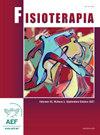Prevalencia de dolor musculoesquelético y disfunciones de suelo pélvico en artistas escénicos: estudio preliminar
Q4 Health Professions
引用次数: 0
Abstract
Objective
To determine the prevalence of musculoskeletal pain and symptoms of pelvic floor dysfunction (PFD) in professional performing artists, including dancers, singers, and musicians.
Methodology
A descriptive cross-sectional study in which male and female participants were assessed through a five-section questionnaire: 1) Informed consent, 2) Sociodemographic data, 3) Standardized Nordic Questionnaire (SNQ), 4) Pelvic Floor Distress Inventory (PFDI-20), and 5) Open-ended questions regarding knowledge of the pelvic floor muscles (PFM).
Results
A total of 45 participants completed the questionnaire, of which 2 were excluded, leaving 9 men and 34 women. The median age was 24 years, and the median experience in their field was 13 years.
All participants (100%) reported musculoskeletal pain in the past 12 months, primarily in the neck (88%) and lower back (86%). Additionally, 47% were unable to perform their usual work due to pain. The prevalence of PFD symptoms was 86%. Urinary symptoms were the most prevalent in both sexes, representing 91.2% of the total. Moreover, 66.7% of participants did not recognize the structures and functions of the PFM, although 71.4% knew how to contract them.
Conclusions
The prevalence of musculoskeletal pain, particularly in the neck and lumbar region, is high, as is the prevalence of PFD symptoms among performing artists. Understanding these aspects can help in proposing effective strategies and interventions to improve the health conditions of performing artists.
表演艺术家肌肉骨骼疼痛和骨盆底功能障碍的患病率:初步研究
目的了解专业表演艺术家(包括舞者、歌手和音乐家)中肌肉骨骼疼痛和盆底功能障碍(PFD)症状的患病率。方法一项描述性横断面研究,通过五部分问卷对男性和女性参与者进行评估:1)知情同意,2)社会人口统计数据,3)标准化北欧问卷(SNQ), 4)盆底窘迫量表(PFDI-20),以及5)关于盆底肌肉知识(PFM)的开放式问题。结果共45人完成问卷,其中2人被排除,男性9人,女性34人。平均年龄为24岁,平均工作经验为13年。所有参与者(100%)报告在过去的12个月中有肌肉骨骼疼痛,主要在颈部(88%)和下背部(86%)。此外,47%的人因疼痛无法完成日常工作。PFD症状的患病率为86%。泌尿系统症状在两性中最为普遍,占总数的91.2%。此外,66.7%的参与者不认识PFM的结构和功能,尽管71.4%的参与者知道如何收缩它们。结论:肌肉骨骼疼痛的患病率,特别是在颈部和腰椎区域,在表演艺术家中也是如此。了解这些方面有助于提出有效的策略和干预措施,以改善表演艺术家的健康状况。
本文章由计算机程序翻译,如有差异,请以英文原文为准。
求助全文
约1分钟内获得全文
求助全文
来源期刊

Fisioterapia
Health Professions-Physical Therapy, Sports Therapy and Rehabilitation
CiteScore
0.50
自引率
0.00%
发文量
37
期刊介绍:
Publicación Oficial de la Sociedad Española de Fisioterapeutas. Sus páginas ofrecen desde artículos originales hasta revisiones, pasando por el estudio de casos o los actos más importantes relacionados con la especialidad.
 求助内容:
求助内容: 应助结果提醒方式:
应助结果提醒方式:


